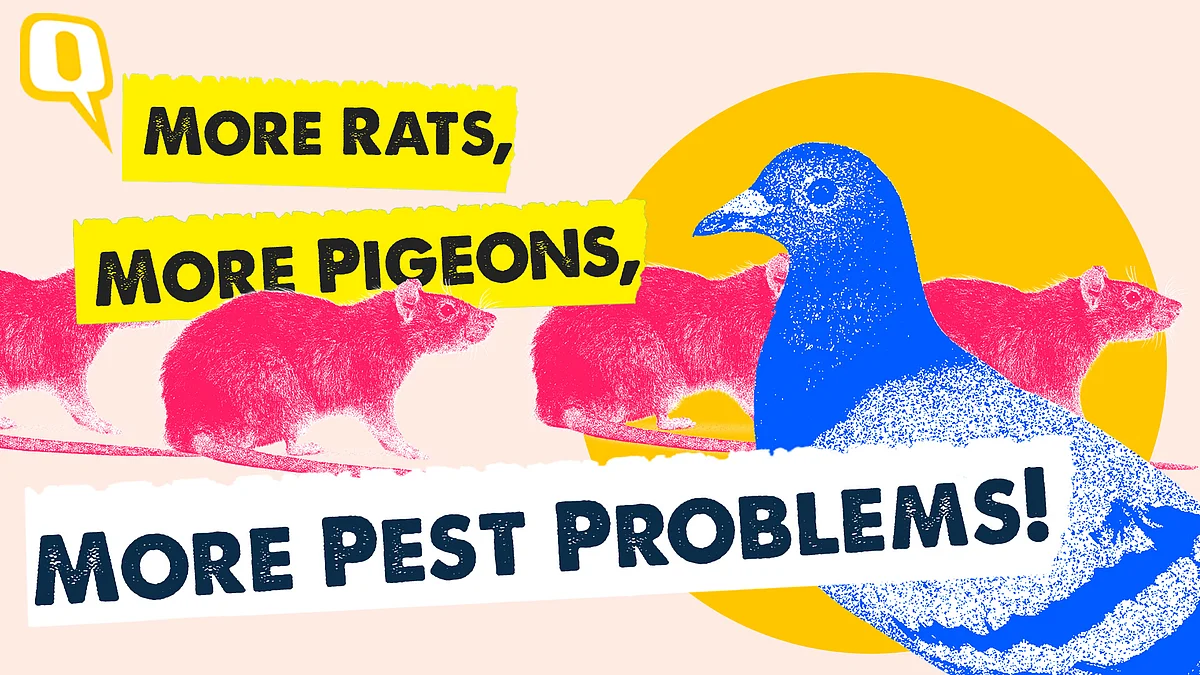Watch: Climate Change is Great... If You're a Kabootar (Or a Rat)
Without cold weather to slow them down, pigeons are nesting and laying eggs year-round!

advertisement
Climate crisis is staring us in the face – and we at The Quint want to keep doing our bit in covering these stories. Support us to tell them. Become a member now.
Pigeons have always been a regular feature of our cities, sure. But you're likely to see more and more of them in the future because climate change is making pigeons and other urban pests multiply like crazy.
There's a very simple explanation for that. The rising temperatures create the perfect conditions for urban pests to thrive, as several studies show.
This means that the hotter the climate gets, and the longer summers last, the more their populations will grow.
The Pigeons Are Loving the Heat
Pigeons thrive in places where they can find food and shelter, and cities are perfect for that. Typically, they reproduce in the summer, with their populations slowing down during the colder months.
But with winters getting warmer, they can now breed longer.
Without cold weather to slow them down, pigeons are nesting and laying eggs year-round.
A study from the Journal of Urban Ecology found that major cities around the world are seeing more frequent breeding cycles in pigeons as temperatures rise.
This trend is evident in Indian cities, too. According to the 2023 State of India’s Birds report, between 2000 and 2023, the pigeon population in India increased by more than 150 percent—the highest percentage increase among all bird species whose populations grew.
Rats Are Loving the Changing Weather Too
Warmer temperatures keep their litters warm in winter and allow them to reproduce year-round.
More frequent floods and waterlogging due to sudden untimely heavy rains also push rats out of their natural habitats and right into our cities. And once they’re in, they’ve got all the food they could ever need from our overflowing trash cans and littered food waste.
The more erratic the weather becomes, the easier it is for rats to migrate into urban areas.
They’re Not Just a Nuisance, They’re a Major Health Risk
Both pigeons and rats are carriers of several diseases. According to the US CDC, rats alone spread over 35 diseases, including leptospirosis, salmonella, and hantavirus.
As their populations grow, so does the risk to public health.
More pigeons and more rats mean more droppings everywhere carrying dangerous diseases. According to experts, pigeon droppings are responsible for the rising cases of hypersensitivity pneumonitis in cities.
Pigeon droppings cause cryptococcal meningitis (a fungal infection that spreads from lungs to the brain with symptoms that include confusion or changes in behaviour) and psittacosis (a bacterial infection with pneumonia-like condition).
One can easily contract any of these diseases because pigeon faecal matter is everywhere — on roads, in the soil, and, of course, in the nests they make in our homes.
Since faecal matter can remain suspended in the air, it easily travels into our lungs. In urban centers, the impact is even worse due to poor air quality.
How Do We Tackle the Urban Pest Issue?
Many cities around the world are adopting animal-friendly strategies to control pigeon populations.
In cities like Paris, Barcelona, and Brussels, authorities have installed bird feeders stocked with contraceptives that temporarily make female birds infertile.
In India, in March 2023, the High Court of Bombay ordered a ban on feeding pigeons. The Pune Municipal Corporation began imposing a Rs 500 fine on citizens feeding pigeons in public places, calling their “unnatural growth” a health hazard. Other cities, like Delhi, are considering similar bans.
But fines and bans haven’t stopped many from feeding their feathered friends.
So yes, the bottom line is climate change is giving pests a helping hand — and we’re responsible for it.
Tackling climate change is a long-term, slow process that requires systemic change. However, one immediate step we can take is better waste management — so that, even if we have to share our cities with pests, they don’t take over.
Watch the full video on The Quint.